Environmental Policy, Practices, and Goals
Praram 9 Hospital Public Company Limited places great importance on the efficient use of resources and minimizing environmental impact throughout the supply chain. The growth of the Hospital business may directly and indirectly affect the environment, including air and water pollution, general and hazardous waste generation, as well as energy and water resource consumption.
The Company recognizes that managing environmental issues presents both risks and opportunities for gaining a competitive advantage. Therefore, the Company emphasizes fostering a sense of environmental responsibility to raise awareness of the importance of sustainable development and promote a sustainability culture within the organization. This initiative is carried out alongside other related environmental activities. (For details on environmental performance, please refer to section 3.3.2.)
The Company is committed to aligning its operations with both short-term and long-term strategic sustainability goals to maintain a balance between business operations and the sustainable reduction of environmental impact. This approach is also in line with the Sustainable Development Goals (SDGs), specifically goals 3, 6, 8, 9, 12, 13, and 16, which focus on enhancing health standards, environmental conservation, and sustainable social development.
Sustainability Management Goals in the Environmental Dimension
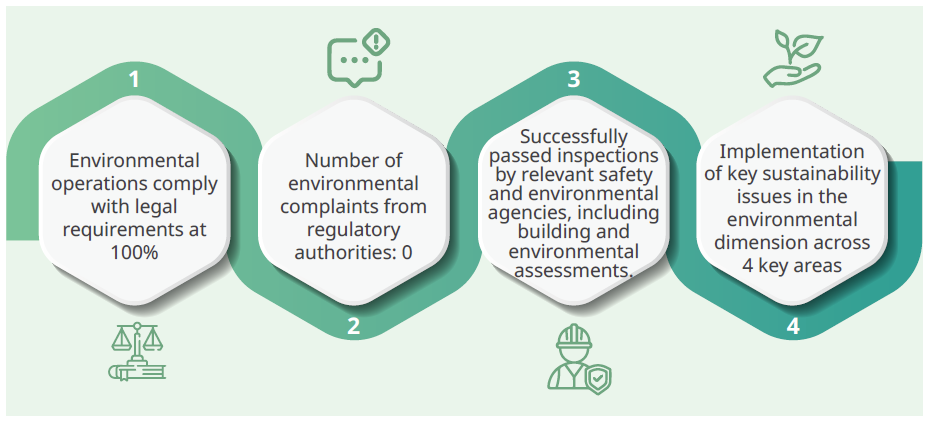
Long-Term Goals
- Achieve Net-Zero greenhouse gas emissions by the year 2065
- Achieve Carbon Neutrality by the year 2050
- Reduce net greenhouse gas emissions SCOPE 1, 2 and 3 by more than 5% by the year 2028, compared to the base year 2022
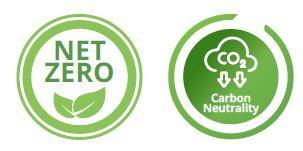
Environmental Performance
The Company is committed to sustainable environmental management, ensuring a balance between business growth and the conservation of natural resources and the environment. Its operations are guided by four key principles:
- Climate Change Management – Focused on reducing greenhouse gas emissions and adapting to the impacts of climate change.
- Energy Efficiency – Promoting efficient energy use and supporting the adoption of clean energy.
- Water Management and Conservation – Ensuring optimal water use while implementing measures to reduce consumption and improve wastewater treatment efficiency.
- Waste Management – Emphasizing waste reduction, waste segregation, and proper disposal in compliance with environmental standards.
For further details on the Company's measures and performance, please refer to sections 3.4.2.1, 3.4.2.2, 3.4.2.3, and 3.4.2.4.
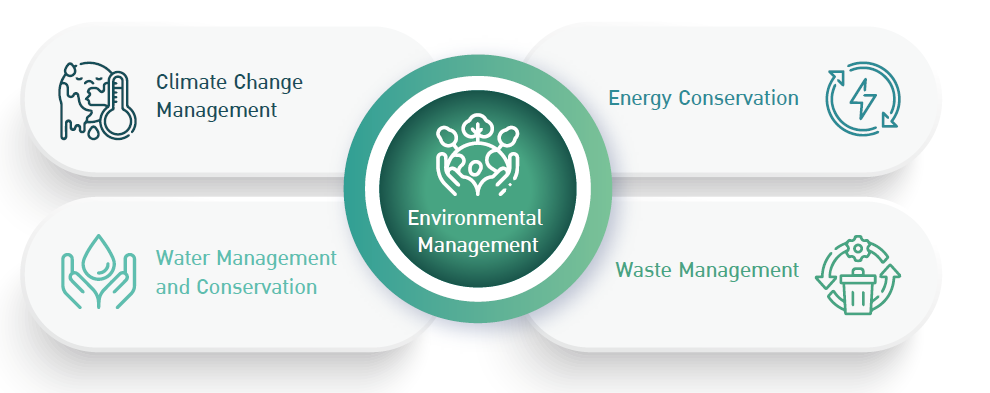
Under these four operational principles, the Company places great emphasis on efficient resource management by adopting the reduce, reuse, and recycle (3Rs) approach throughout the value chain. Additionally, the circular economy concept has been integrated into operations to enhance resource efficiency, minimize waste, and reduce environmental impact.
Furthermore, the Company prioritizes continuous communication and collaboration with both internal and external stakeholders at all levels to ensure the effective implementation of these principles across all operational processes.
The key outcomes of these measures can be summarized as follows:
Climate Change Management
Currently, climate change has become a critical global issue, impacting all sectors, including businesses, and potentially affecting the Company's operations in both the short and long term. To mitigate and prevent risks associated with climate change, the Company closely monitors environmental situations and trends while formulating strategies and policies for climate change management. These efforts align with the United Nations Sustainable Development Goal (SDG), specifically Goal 13: “Climate Action”, as well as the Company's own sustainability objectives
This approach reflects the Company's commitment to conducting business in an environmentally responsible manner while contributing to society's progress toward sustainable development.
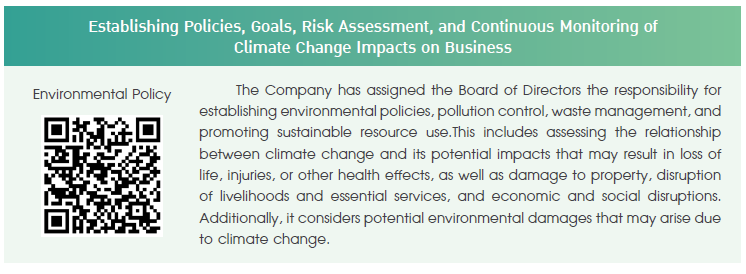
Environmental Risks Application of the Recommendations of the Task Force on Climate-related Financial Disclosures (TCFD)
Climate Change Risk
The hospital discloses climate-related risk information in accordance with the framework of the Task Force on Climate-Related Financial Disclosures (TCFD) as follows:
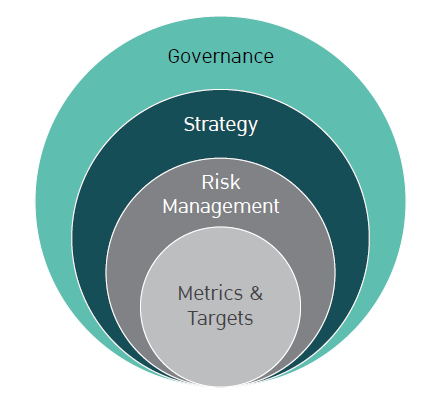
1. Governance
- Climate change risk management executives jointly oversee the greenhouse gas emission reduction process, with the Corporate Risk Management Committee and the Sustainability Committee jointly making decisions on key issues.
- The Audit Committee and the Corporate Governance and Sustainable Development Committee will acknowledge, provide comments, and report on the performance of sustainability management and climate risk management to the Board of Directors for acknowledgment, comments, and oversight to ensure implementation according to the greenhouse gas reduction plan.
- The Board of Directors will oversee and approve sustainability policies, greenhouse gas reduction plans, and issues related to climate change, assigning senior management to implement the policies and monitor the results.
2. Strategy
- Assessment of risks and opportunities related to climate change, including physical risks, transition risks, and market risks, and linking them to financial impacts.
- Establishment of strategies and measures to address climate change in order to mitigate negative impacts and capitalize on new opportunities, such as investments in energy-saving technologies, improvements in resource utilization efficiency, and the development of environmentally friendly products and services.
- Analyze the impact of climate change risks on the organization's strategy as well as the financial implications in the short, medium, and long term.
- Scenario analysis to consider the impact on the business under various situations for strategic decision-making and long-term planning.
3. Risk Management
Integration of climate change risk into the Enterprise Risk Management (ERM) system, with the identification, risk assessment, management, and response to risks through mitigation and adaptation initiatives, such as emergency and disaster management plans, and work plans for natural disasters, catastrophes, windstorms, and earthquakes.
Assessment of risks and opportunities associated with climate change
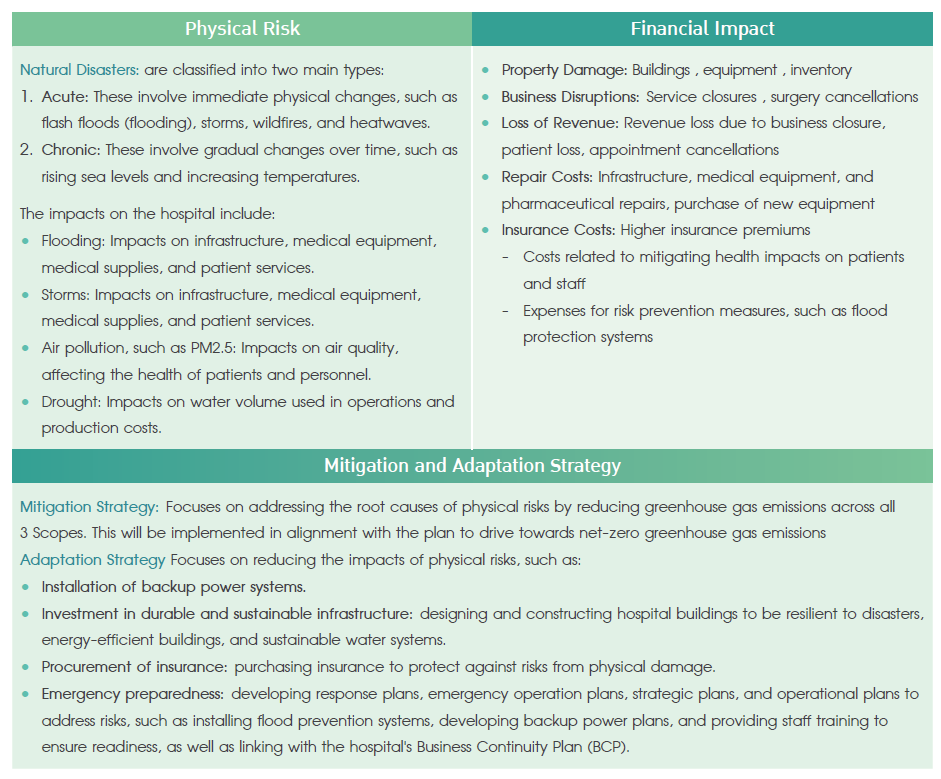
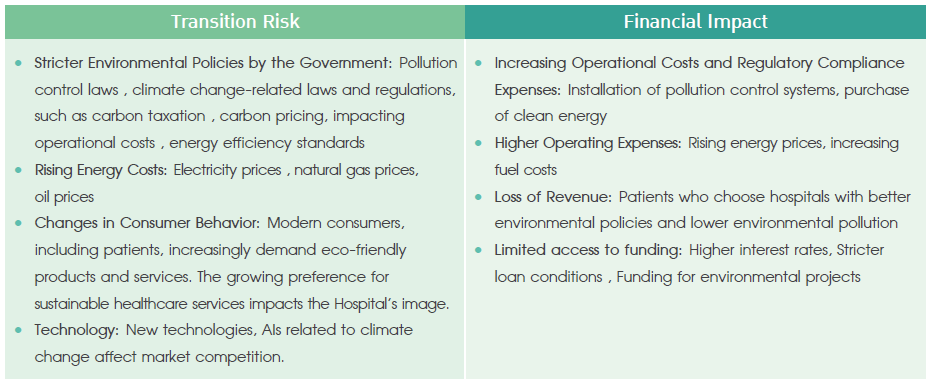
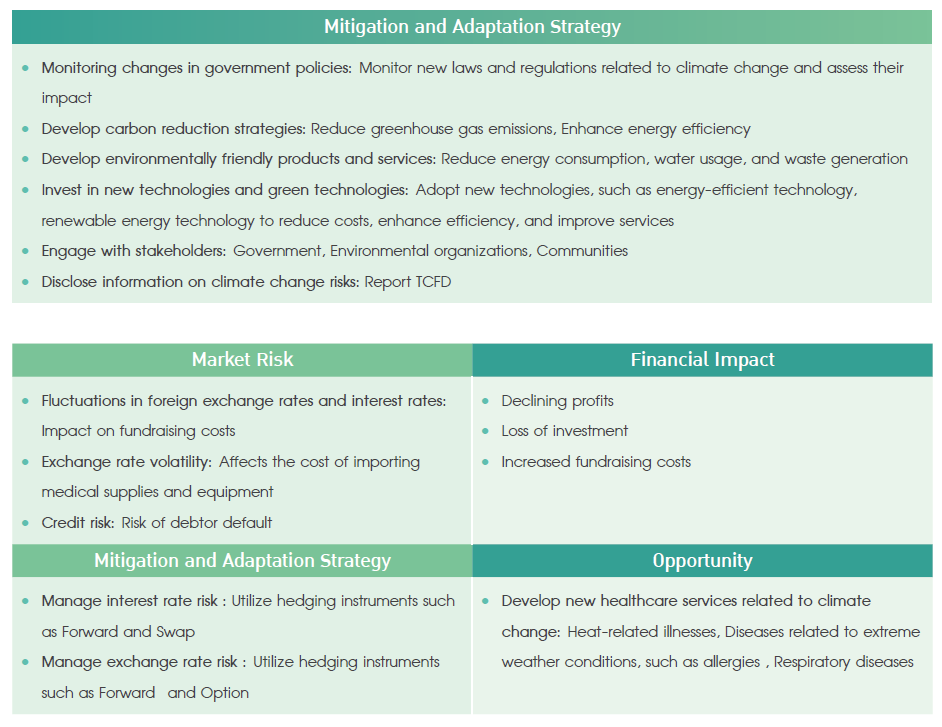
4. Metrics & Targets:
- Recording of greenhouse gas emissions data for Scope 1, 2, and 3.
- Establishment of greenhouse gas emission reduction targets for short-term, medium-term, and long-term.
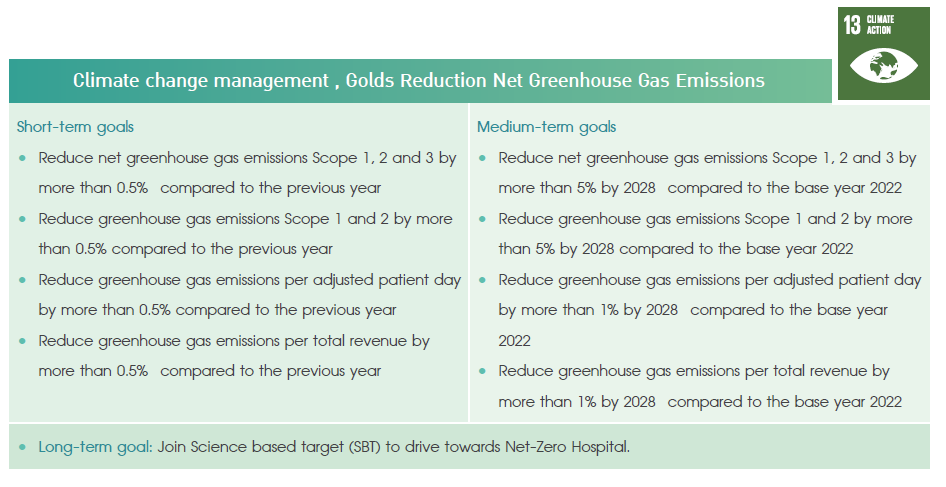
Performance in responding to Reduction Net Greenhouse Gas Emissions
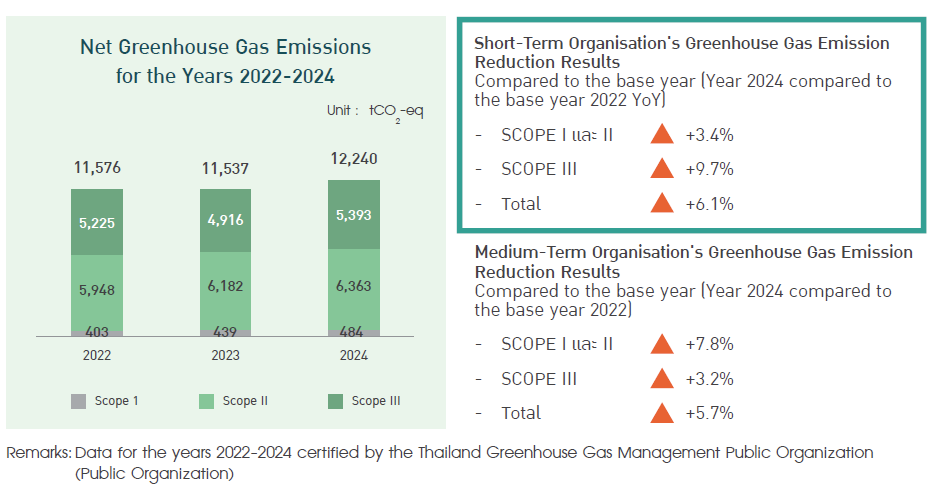
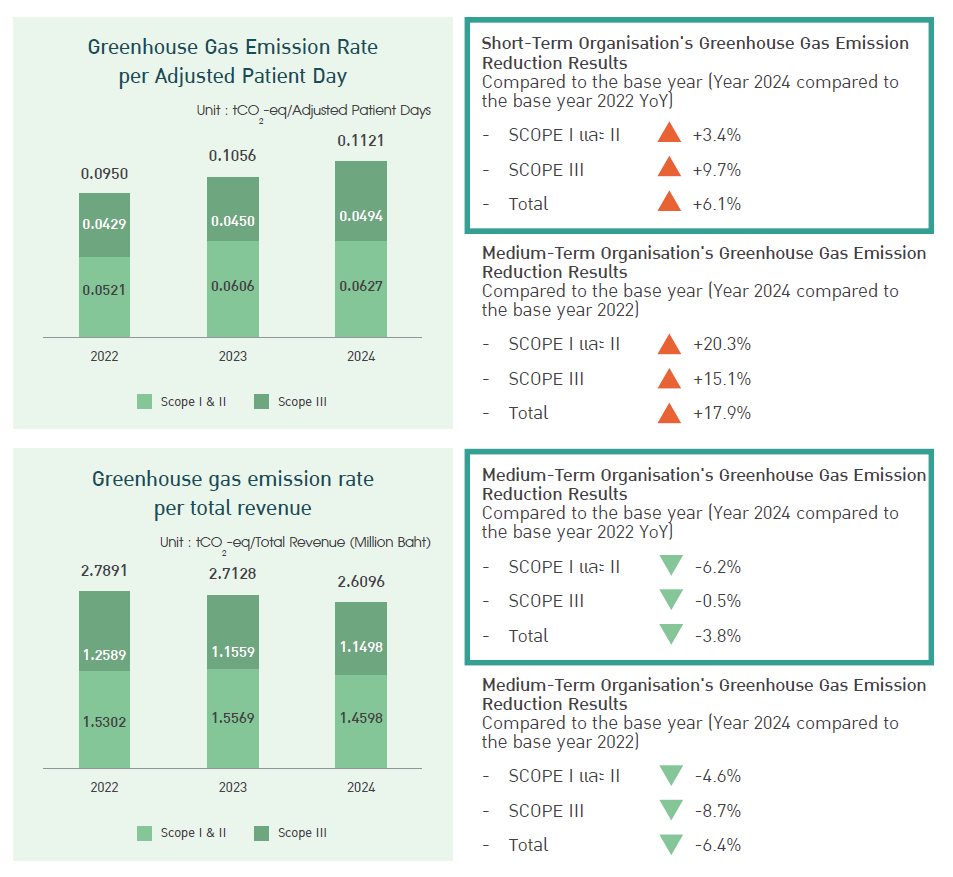
In measuring greenhouse gas emissions, the Company has designated 2022 as the base year for calculating and disclosing greenhouse gas emissions. This assessment covers four operational buildings, including Building A, Building B, and Building O. The Company has calculated emissions using three approaches: Net greenhouse gas emissions based on the Absolute Emission method. Greenhouse gas emissions per adjusted patient days using the Economic Intensity Approach. Greenhouse gas emissions per total revenue, which has been newly introduced this year as an additional metric to enhance alignment with international greenhouse gas disclosure standards, such as the Global Report Initiative (GRI). The Company’s greenhouse gas emission calculations have been certified by the Thailand Greenhouse Gas Management Organization (Public Organization) for the second consecutive year. Short-term and long-term operational targets have been established through climate change strategies that align with international standards and financial disclosure frameworks, such as the Task Force on Climate-Related Financial Disclosures (TCFD). These assessments of risks and opportunities are integrated into governance, strategic planning, and climate action plans to ensure timely adaptation to evolving conditions and to support the Company’s long-term sustainability.
In the performance results for the year 2024 compared to the base year 2022, the Company’s net greenhouse gas emissions increased by 5.7%, and greenhouse gas emissions per adjusted patient day increased by 17.9%. Meanwhile, greenhouse gas emissions per total revenue decreased by 6.4%. When categorizing greenhouse gas emissions for the year 2024, Scope I emissions amounted to 484 ton CO2eq, Scope II emissions amounted to 6,363 ton CO2eq, and Scope III emissions amounted to 5,393 ton CO2eq
SCOPE III by category


Additionally, the Company has conducted assessments in accordance with the guidelines of the Thailand Greenhouse Gas Management Organization (TGO.) and has verified this data through LRQA (THAILAND) LIMITED.
Approach to Greenhouse Gas Emission Development and Management
The outcomes of the 28th session of the Conference of the Parties under the United Nations Framework Convention on Climate Change (UNFCCC), or COP28, have increased pressure and accelerated efforts to encourage the business sector to expedite transitions toward achieving greenhouse gas reduction targets under the Paris Agreement, which aims to limit the global temperature increase this century to below 2 degrees Celsius compared to pre-industrial levels and to strive to keep the increase within 1.5 degrees Celsius.
The Company has established the following management approaches to reduce greenhouse gas emissions:
- Enhance energy efficiency in buildings, including the consideration of renewable and clean energy utilization, to reduce greenhouse gas emissions in Scope II
- Implementing a circular economy system to integrate greenhouse gas reduction efforts throughout the business value chain.
- Developing environmentally friendly products and service processes to minimize greenhouse gas emissions.
- Foster stakeholder engagement in reducing greenhouse gas emissions through the 3Rs strategy to minimize emissions in Scope III
Carbon Credit Purchase
The Company is currently studying and exploring the voluntary carbon credit pricing landscape in Thailand through the Thailand Greenhouse Gas Management Organization (TGO) to assess opportunities and the cost-effectiveness of environmental initiatives and greenhouse gas reduction efforts. This study is also part of the Company's risk management plan and sustainability policy. The insights gained from this research will be used to inform strategic decisions regarding carbon credit management, including procurement, trading, or the development of initiatives aimed at minimizing long-term environmental impacts.
Supporting the Net Zero Goal
Praram 9 Hospital Public Company Limited and Siam Commercial Bank have announced a significant collaboration to develop financial products that support businesses focused on sustainability. Praram 9 Hospital is the first private hospital to participate in the Sustainability Deposit program, which aligns with business practices that prioritize environmental, social, and governance (ESG) considerations.
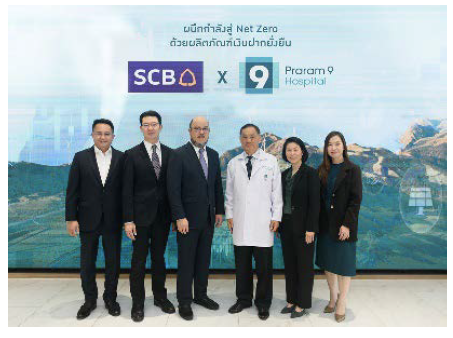
This partnership aligns with Praram 9 Hospital’s sustainable business policy framework, which emphasizes social and environmental responsibility alongside the continuous enhancement of high-quality medical services. The Hospital is committed to creating value for all stakeholders while playing a crucial role in driving positive change for society and the environment in the future.
Energy Management
The use of fossil fuels for electricity generation has significantly contributed to environmental pollution, particularly air pollution. As hospitals face increasing energy demands driven by economic growth, these factors may lead to energy shortages and adversely affect the quality of life in society.
To address these challenges, the Company focuses on renewable energy management and the development of clean technologies throughout its business value chain. These initiatives are key to reducing greenhouse gas emissions and promoting energy efficiency. Furthermore, this approach aligns with the United Nations Sustainable Development Goal (SDG), specifically Goal 7: “Affordable and Clean Energy.”
These efforts reflect the Company’s commitment to balancing business growth with environmental responsibility, paving the way for a truly sustainable future.
Setting Policies, Targets, and Continuous Energy Conservation Monitoring
The Company has established an energy management policy as a framework for promoting participation in energy conservation efforts. It has also integrated management systems in accordance with ISO 14001, while systematically developing an environmental and energy database throughout the business value chain. In the past year, the Company has assessed energy consumption ratios, evaluated the status of energy management, analyzed energy conservation potential, implemented measures, monitored and assessed energy-saving initiatives, and consistently reported findings to the executive committee. These efforts aim to mitigate risks and reduce negative environmental and social impacts sustainably.
Assessing the Proportion of Energy Usage
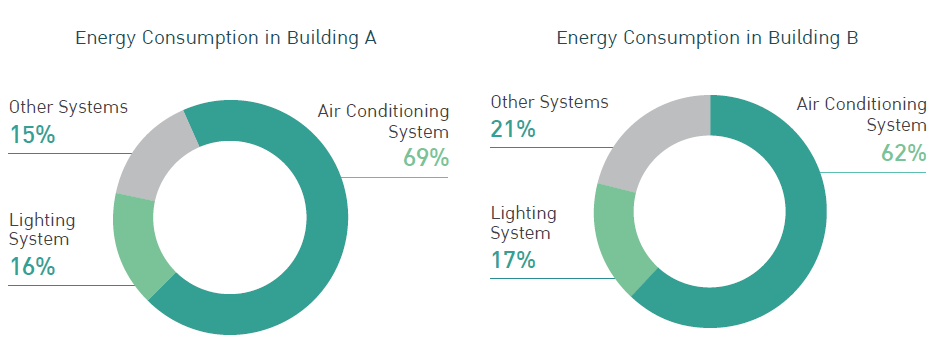
Solar Rooftop Project for Office Buildings
The Company has implemented a Solar Rooftop installation project on the office building roof. In 2024, this initiative has proven to be an effective measure in enhancing energy efficiency and reducing the Company's energy costs. Additionally, the Company plans to expand the installation further next year to increase the proportion of clean energy usage and reinforce its commitment to sustainable business operations.
Performance Results
- In the year 2024, the Company was able to reduce electricity consumption from the grid by 34,765 kWh. per year.
- In 2024, the Company achieved electricity cost savings of 178,693 Baht per year.
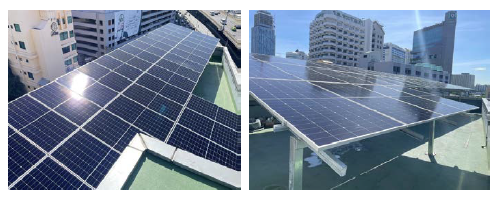
Wastewater Treatment Pond Improvement Project
The wastewater treatment pond of Building B, after being fully operational, revealed several areas that were difficult to operate, leading to a risk that certain monthly water quality measurements might not meet future standards. Additionally, the equipment used in the system consumed a high amount of electricity. Therefore, the Engineering Systems Department proposed improvements to enhance operational efficiency and prevent future issues by implementing the following measures:
1. Addition of Equalization Tank This eliminates the need for an Ejector Pump in the wastewater treatment process, resulting in improved operational efficiency, reduced energy and maintenance costs, and enhanced sustainability in the Company's water resource management.
Performance Results
- Reduced electricity consumption by 10,656 kWh per year.
- Saved electricity costs by 53,280 Baht per year.

2. Replacement of Aeration Pump The aeration pump for the wastewater treatment pond originally installed in the project was an Ejector Pump. During operation, there were multiple instances wherethe equipment did not function properly, resulting in insufficient oxygen supply. Additionally, the existing pump consumed a high amount of electricity, necessitating its replacement with an Aerator Pump.
Performance Results
- Reduced electricity consumption by 25,776 kWh per year.
- Saved electricity costs by 128,880 Baht per year.
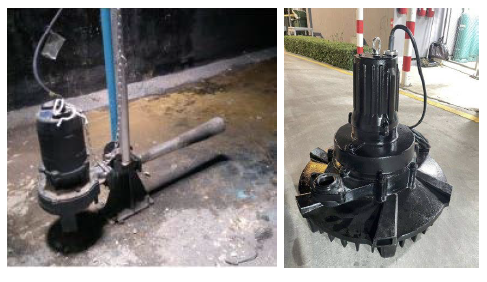
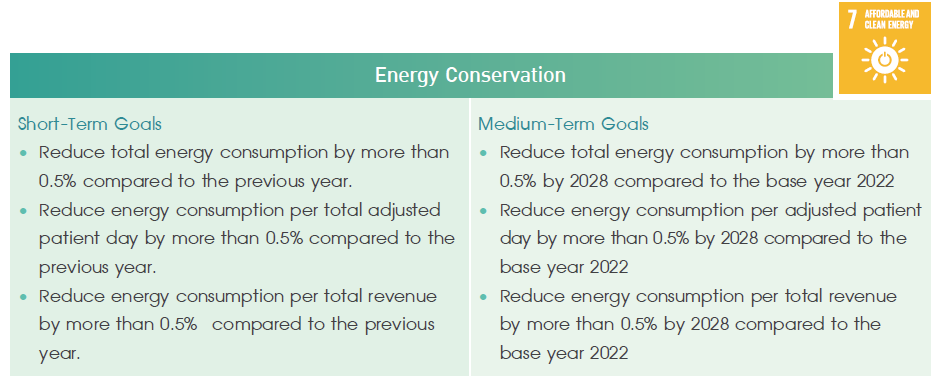
Energy Management Performance Results
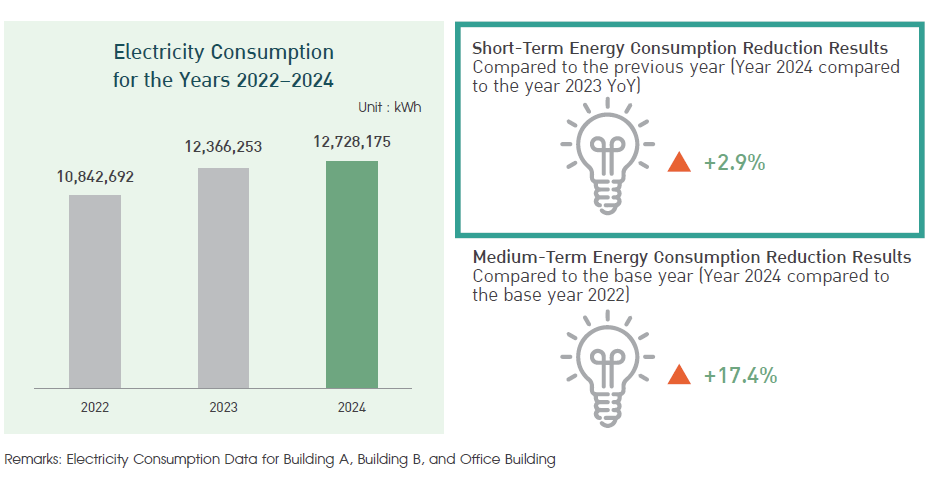
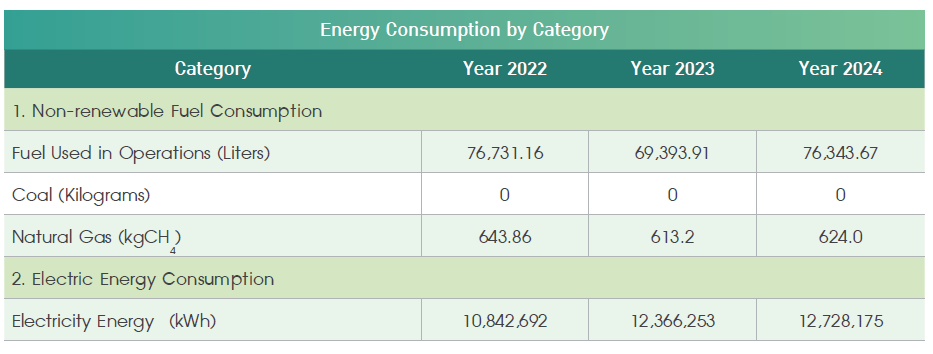
The Company has designated 2022 as the base year for calculating energy consumption, covering 3 operational buildings: Building A, Building B, and Building O. Energy consumption is measured using the Absolute Emission method, while energy consumption per adjusted patient day is calculated using the Economic Intensity Approach. Additionally, energy consumption per total revenue has been included, aligning with the disclosure standards of GRI alongside other relevant topics.
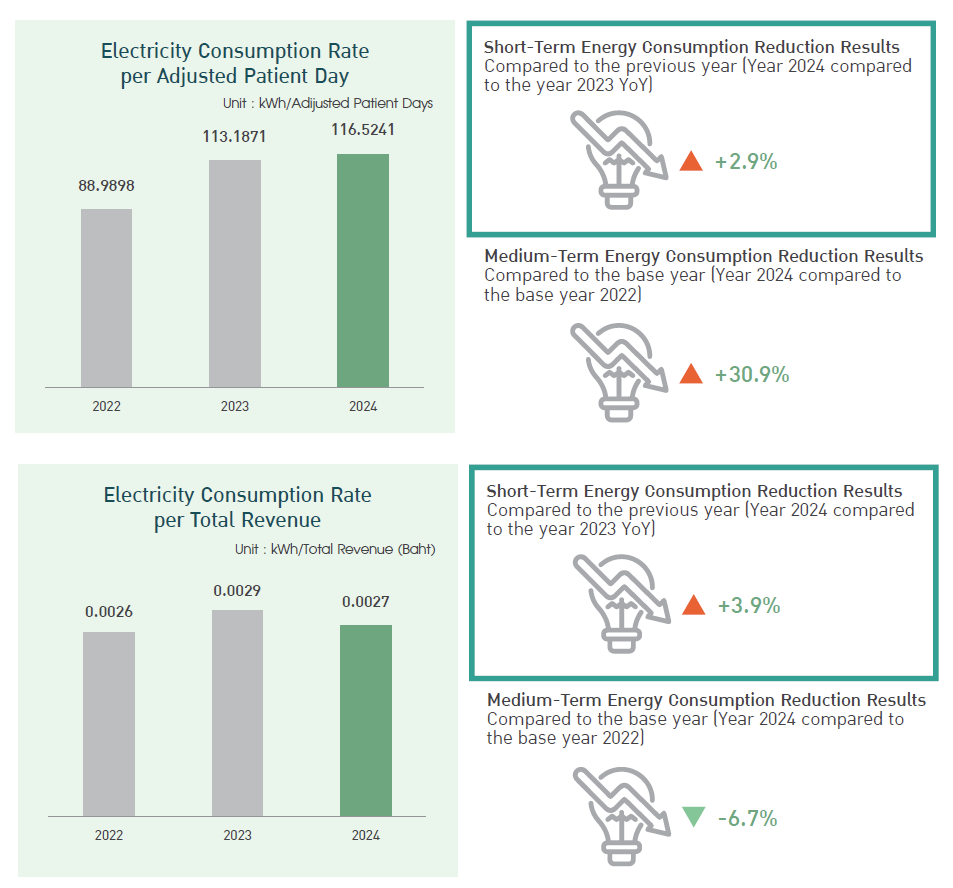
In the performance results for the year 2024 compared to the base year 2022, energy consumption increased by 17.4%. The energy consumption per adjusted patient day increased by 30.9%, while the energy consumption per total revenue decreased by 6.7%. The Company promotes sustainable energy conservation, considering it a critical mission that must be clearly and concretely implemented by all parties. This is achieved through the 3Rs strategy: reduce, reuse, and recycle. The Company has established action plans and energy conservation measures throughout the business value chain, leading to the efficient and optimal use of resources.
Energy Development and Management Approaches
- Enhancing energy efficiency across multiple areas.
- Promoting the use of environmentally friendly renewable energy throughout the value chain.
- Encouraging and supporting energy conservation and reduction activities.
- Controlling the operation of large-scale air conditioning systems.
- Promoting the use of technology in medical services.
- Developing personnel and stakeholders in energy conservation throughout the business value chain.
Water Management
Water resources are among the most significant global risks, particularly water stress, drought, floods, and rising sea levels, which impact both developed and developing countries. These challenges raise concerns about the allocation and use of water for utilities and consuming purposes, while declining water quality directly affects overall public health, ecosystems, and the environment.
The Company recognizes the importance of effective water management in its business operations. Therefore, it has enhanced and developed the quality of both drinking water and wastewater to meet relevant standards, ensuring the reduction of environmental impact and promoting efficient water resource usage. This approach aligns with the United Nations Sustainable Development Goals (SDG), specifically Goal 6: Clean Water and Sanitation, which the Company prioritizes to achieve balanced and sustainable long-term water resource management.
Urinal Function Adjustment and Reduction Project for Public Men's Restrooms
The Company has implemented a measure to disable the automatic flushing mode every two hours in public restrooms, as these areas are frequently used and flushed regularly, making additional automatic flushing unnecessary.
This measure effectively reduces water consumption and costs while promoting efficient water resource usage. It does not compromise hygiene or cleanliness standards. This initiative aligns with the Company’s commitment to sustainable water resource management.
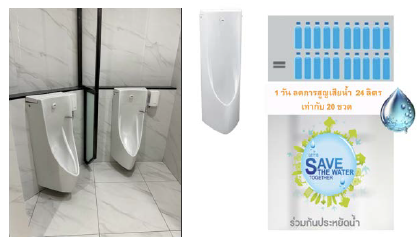
Performance Results
- Reduced water consumption by 388,800 liters per year.
- Saved water utility costs by 10,498 Baht per year.
Recycled Wastewater for Irrigation Project (RECYCLE)
The Hospital has implemented effective wastewater management measures by reusing treated water that meets legal standards in a cost-effective manner, particularly for watering plants within the Hospital premises.
This initiative has been continuously implemented and expanded to include additional areas, such as the trees behind the Hospital fence along the canal and the road behind the delivery area. The project has successfully met its goals and key performance indicators, leading to a reduction in the Hospital’s overall water expenses. Additionally, it has raised awareness and fostered cooperation among employees at all levels, as well as encouraged stakeholder participation in promoting sustainable water and resource conservation.
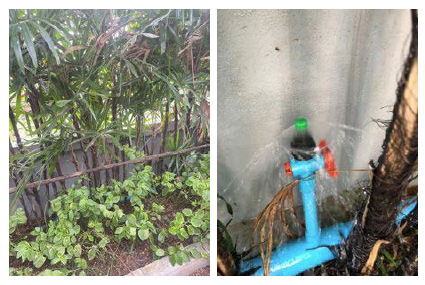
Performance Results
- Reduced water consumption by 467 m3 per year.
- Saved water utility costs by 12,609 Baht per year.
- Reduce water usage accumulated since the project started in 2022 by 2,141 m3 or save 49,874 Baht.
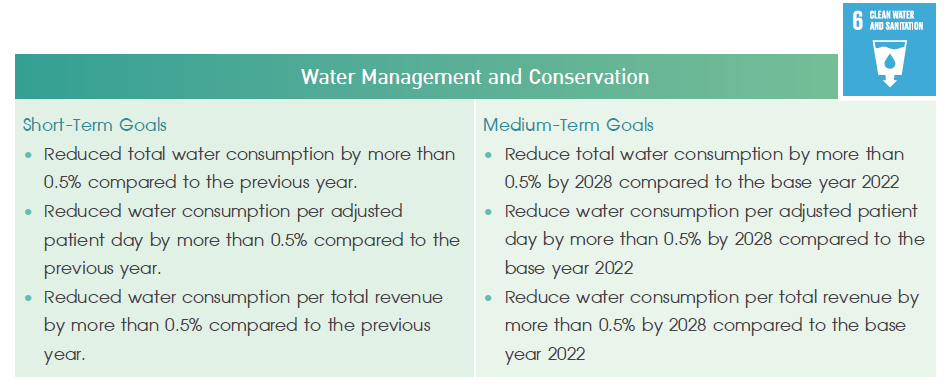
Water Management and Conservation Performance Results
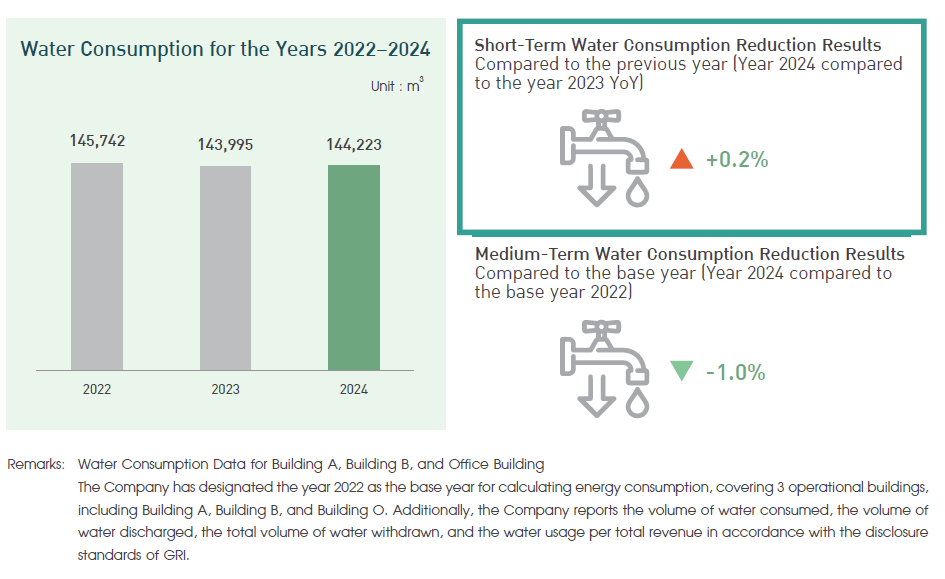
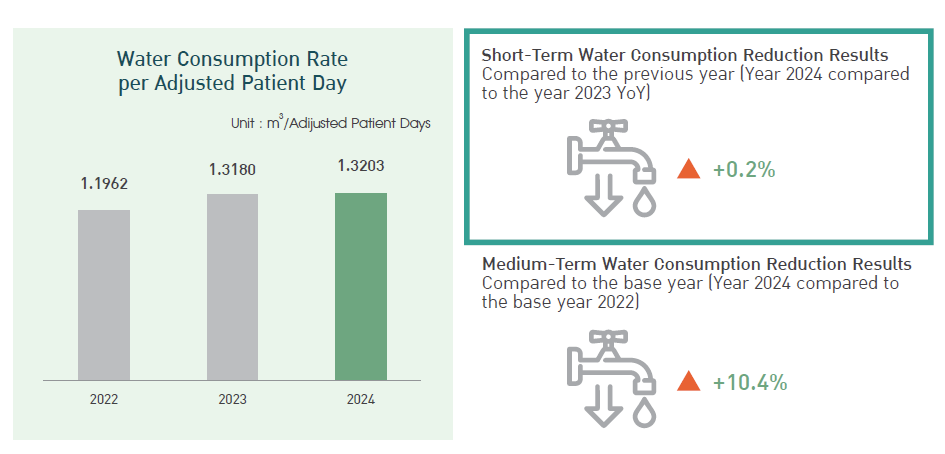

In the performance results for the year 2024 compared to the base year 2022, total water consumption decreased by 1.0%. The water consumption per adjusted patient day increased by 10.4%, while the water consumption per total revenue decreased by 12.4%.
All water sources used are freshwater supplied by the municipal water system

The Company promotes water resource conservation by utilizing technology that enhances water usage efficiency and fostering employee engagement at all levels in water conservation within the Hospital, in collaboration with stakeholders, through the 3Rs strategy, which includes continuous efforts to reduce water consumption and reuse water.
Water Discharge into Natural Water Sources

Water Development and Management Approaches
- Use water responsibly, including monitoring water consumption and recycling water (Recycle)
- Promote and support water conservation activities
- Promote the use of technology to enhance water resource conservation efficiency
- Systematically monitor water-related risks, particularly those affecting the Company
Water Usage Data - Recycle Wastewater Annually

Pollution Management
Global warming and severe climate change have intensified natural disasters.
The impact of these factors has exacerbated environmental pollution in many aspects, including air, water, soil, and noise pollution, as well as solid waste and sewage issues. These problems significantly affect the quality of life for the population and the overall ecosystem.
Currently, PM2.5 pollution is a major issue arising from climate change, directly impacting public health. Short-term exposure to PM2.5 can cause eye and throat irritation, coughing, breathing difficulties, and skin rashes. Long-term exposure may increase the risk of heart disease and lung cancer.
According to the Pollution Control Department, PM2.5 levels in Thailand typically rise between December and March each year. In 2024, PM2.5 levels have increased to a point where they are beginning to affect public health. Therefore, a systematic and sustainable approach to pollution management is essential to effectively address these challenges and align with the country’s environmental sustainability goals.
Pollution Reduction Measures
The company prioritizes pollution management across all aspects. However, since the company operates in the healthcare sector, which inherently does not generate pollution in multiple dimensions, the primary focus is on air pollution control. Currently, the company has implemented the following pollution reduction measures:
- Improvement of the ventilation system by installing a Pre Air Unit (PAU.), which functions to reduce humidity and filter particulate matter before supplying air into the building. The unit is equipped with high-efficiency air filters, including both a Pre-Filter and a Medium Filter. Notably, the Medium Filter has a filtration precision of 0.4 microns, making it effective in capturing PM2.5 particles.
- Installation of HEPAfilters in clean rooms and infection control rooms (ISOLATE ROOM) to enhance air pollution reduction efficiency. This measure helps control the risk of airborne disease transmission and prevent contaminants from being released into the environment. The system's performance is regularly monitored to ensure compliance with standard requirements. Additionally, a systematic maintenance plan has been established, including scheduled equipment replacements, to ensure that the air filtration system continues to operate at peak efficiency in preventing and controlling air pollution.

Environmental Resource Promotion
Environmental issues are becoming increasingly severe, leading to the continuous degradation of natural resources and triggering various consequences, particularly for the current population, which faces resource scarcity and the resulting social conflicts.
However, these challenges can be addressed if all sectors, especially local communities, collaborate seriously in preventing and resolving environmental issues. Such efforts would help restore and preserve natural resources, bringing them back into balance.
Therefore, beyond conservation and environmental management, it is also essential to promote and develop environmental resources. This includes raising public awareness, implementing environmental restoration measures, reducing excessive resource consumption, and supporting the use of alternative materials or renewable energy. These initiatives will help mitigate ecological impacts and foster long-term environmental sustainability.
Establish Policies, Goals, Pollution Reduction Measures, and Continuously Monitor Them.
The Company supports and promotes the sustainable use of environmental resources by setting short-term goals to implement at least one clean and renewable energy project per year. For its long-term goal, the Company is committed to increasing clean energy usage to over 100 kW by 2028, enhancing energy efficiency, reducing environmental impact, and supporting sustainable development.
Projects
The Company has implemented a renewable energy project through the installation of solar cells over the past year, including both solar rooftop systems and solar-powered lighting, to promote the use of clean energy and support environmental conservation. As a result of this project, the Company successfully generated a total of 61 kW of electricity, comprising:
- 49.14 kW from solar rooftop systems
- 11.91 kW from solar-powered lighting installed across various buildings
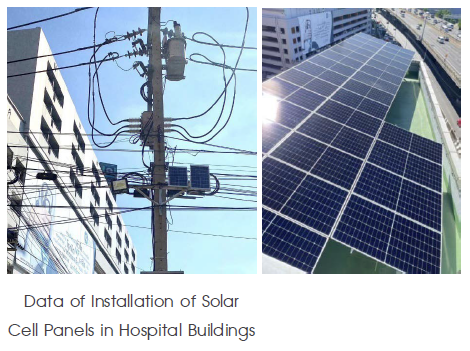
This project is part of the Company’s commitment to promoting the sustainable use of environmental resources and aligns with its pollution management policy. The project aims to reduce environmental impact and contribute to long-term energy balance and sustainability.

Waste Management
The management of hazardous waste and non-hazardous waste presents a significant challenge in mitigating climate change impacts. These types of waste can become breeding grounds for pathogens, cause foul odors, and disrupt ecological balance. If improperly disposed of in landfills, they may generate methane gas, a potent greenhouse gas contributing to global warming.
To address these issues, Praram 9 Hospital Public Company Limited has implemented a systematic waste management policy covering the entire business value chain. The policy focuses on waste reduction, segregation, and proper disposal to minimize greenhouse gas emissions and environmental impact. This approach aligns with the 12th goal of the United Nations Sustainable Development Goals (SDGs): Responsible Consumption and Production, which emphasizes efficient resource utilization, waste reduction, and sustainable development promotion.
Establish Policies, Goals, Waste Reduction Measures, and Continuous Monitoring.
Praram 9 Hospital Public Company Limited prioritizes waste management and impact risk assessment on business operations by promoting a systematic waste management approach. This includes waste segregation at the source and reducing the use of materials or products that generate waste.
The Hospital encourages Reuse and aims to minimize single-use consumption, such as reducing foam and plastic use by switching to personal food containers, water bottles, or cups. It also promotes reusable cloth bags and shopping bags, as well as double-sided paper usage to minimize waste. This initiative helps reduce landfill waste, hazardous waste, and greenhouse gas emissions, reinforcing the Hospital’s commitment to sustainable environmental responsibility alongside business operations.
Care the Bear Project
Praram 9 Hospital Public Company Limited has joined the “Care the Bear” project with the Stock Exchange of Thailand to promote the reduction of greenhouse gas emissions through a monitoring system that tracks emissions from various activities within the organization. The project aims to encourage more efficient consumption behaviors in line with the circular economy approach. This initiative aligns with the Company's climate change management and waste management policies while also fostering learning and engagement among employees. It raises environmental awareness and encourages sustainable behaviors within the organization’s operations.
The activities of the Care the Bear project include:
- Encourage the use of public transportation or carpooling
- Reduce paper and plastic use from documents and packaging
- Eliminate the use of foam packaging or decorative foam
- Reduce energy consumption from electrical appliances or switch to energy-efficient devices

The campaign encourages hospital personnel to use tiffin carriers and reusable cups provided by the Hospital for food packaging instead of foam or plastic containers. This initiative supports the Hospital’s development approach and promotes waste management based on the 1A3R concept, which includes Avoid, Reduce, Reuse, and Recycle. This approach not only helps reduce waste but also contributes to long-term environmental sustainability.
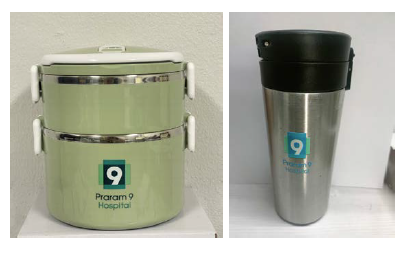
Care the Whale Project
In 2023, the Company enrolled in the Care the Whale project under the concept of “Invisible Waste”, focusing on reducing greenhouse gas emissions through waste management. The key objective is to eliminate the concept of waste and maximize resource utilization by applying the principles of the Circular Economy to waste management for optimal benefits. This initiative aims to address waste-related issues contributing to global warming and promote sustainable and efficient resource use.
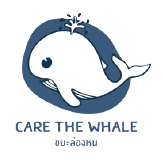
In 2024, the Hospital implemented waste management improvement initiatives through a campaign promoting awareness and proper waste segregation. This initiative aimed to enhance knowledge and foster consciousness among hospital personnel while encouraging waste sorting before disposal. The objective was to develop long-term awareness and knowledge on sustainable waste management.

Plastic Soap Bottle Reduction Project (Avoid)
In 2024 , the Hospital also promoted and supported the reduction of plastic-based materials by installing automatic foam soap dispensers in inpatient ward restrooms. This replaced the use of small plastic soap bottles in the Set admit kits, aligning with efforts to combat global warming and contributing to long-term environmental sustainability.

Plastic Bag Reduction Project (Reduce)
Additionally, in 2024, the Hospital launched a campaign to reduce, refrain from, and eliminate the use of plastic bags. As part of this initiative, plastic bags previously used for packaging linens were repurposed for collecting recyclable waste. This approach maximized resource utilization and minimized environmental impact through the conscious reuse of plastic.
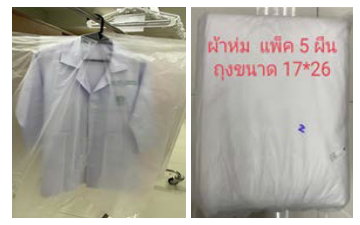
Project to Eliminate the Use of Foam Boxes for Chemical Waste Disposal
ในปี 2567 In 2024, the Hospital prioritized and promoted waste management policy development based on the 1A3R concept, with a focus on Reduce to align with the Hospital’s waste management approach. Recognizing the environmental impact of using foam boxes for chemical waste disposal, which exacerbates air pollution during the destruction process, the Hospital collaborated with service providers to replace foam boxes with carton boxes as an alternative. This initiative contributes to environmental conservation both directly and indirectly with greater efficiency.
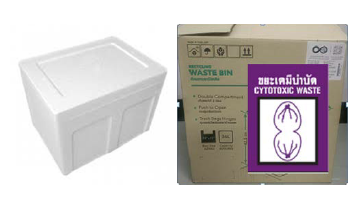
Used Plastic Management Project to Convert Waste into Reusable Bags (Upcycling)
Furthermore, in 2024, the Hospital partnered with SCG to manage post-consumer plastics within the facility. The goal was to recycle and repurpose these materials to reduce waste and carbon dioxide emissions. This collaboration reinforced the principle of resource circularity through the Closed Loop Program, aligning with the sustainability objectives of both organizations. Under the ESG strategy, the Hospital and SCG established cooperative efforts to develop effective plastic waste management solutions. The initiative also promoted the use of recycled plastics as raw materials in manufacturing eco-friendly products, thereby reducing waste generation and minimizing carbon dioxide emissions into the environment.
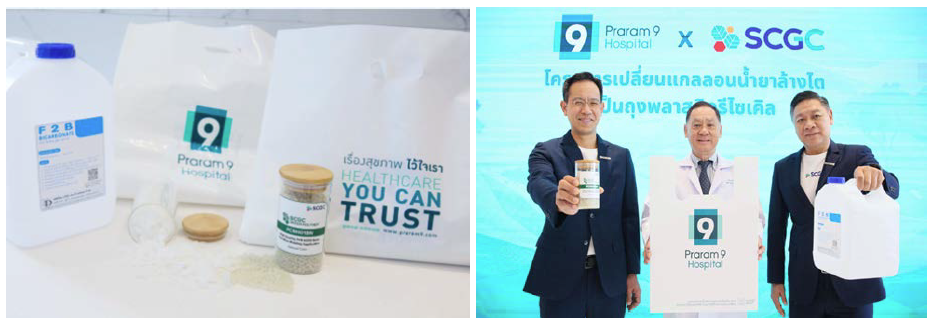
E-Waste Management Project
Praram 9 Hospital, in collaboration with AIS, launched an environmental campaign under the initiative “Dispose ofE-Waste Properly”. This campaign encourages hospital employees, staff, and visitors to dispose of electronic waste (E-Waste), such as mobile phones, tablets, accessories, computer components, and other electronic devices, at designated collection points within the Hospital.
The project focuses on ensuring proper recycling of E-Waste to reduce pollution and protect the environment. It not only helps decrease the volume of E-Waste in Thailand but also minimizes the risk of hazardous substances such as mercury, lead, and heavy metals contaminating soil and water sources, which could pose health risks. Lead exposure, for instance, can cause toxicity affecting the nervous system, circulatory system, and kidney function, among other health concerns.

Project for Donating Old Desk Calendars for Braille Document Production
Between 2021 - 2024, the Hospital conducted a project to collect old desk calendars from executives, physicians, staff, and their families for donation to the Thailand Association of the Blind. These calendars were repurposed into Braille educational materials for visually impaired students.
This project not only promotes education and learning opportunities for visually impaired individuals but also instills a corporate culture of public service and supports assistance for underprivileged groups in society. Additionally, it helps reduce deforestation for Braille paper production and minimizes waste by maximizing the reuse of materials. This initiative reinforces the Hospital’s image as an organization committed to environmental and social sustainability.
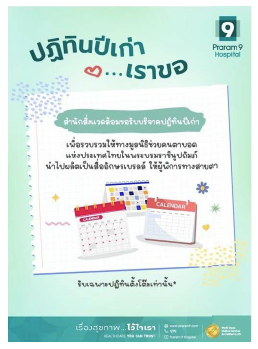


Waste Management Performance Results
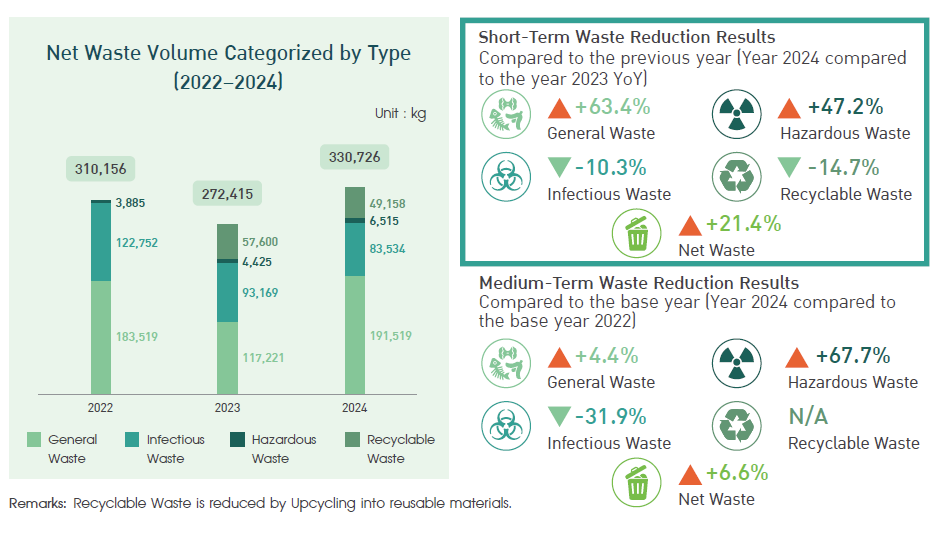

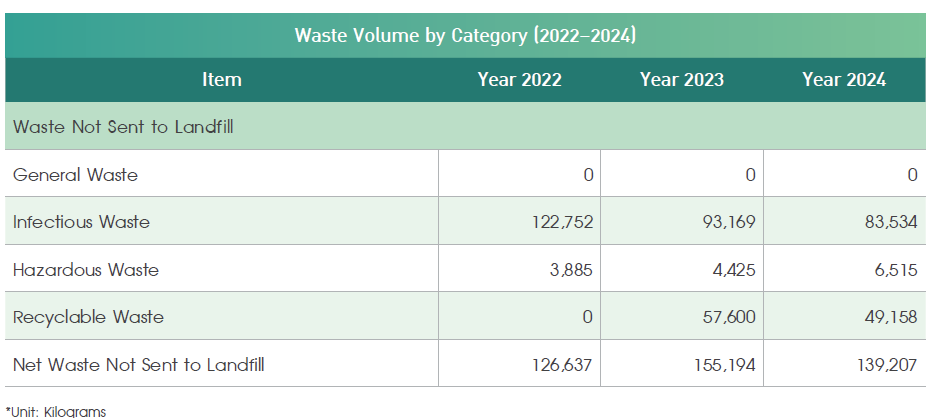
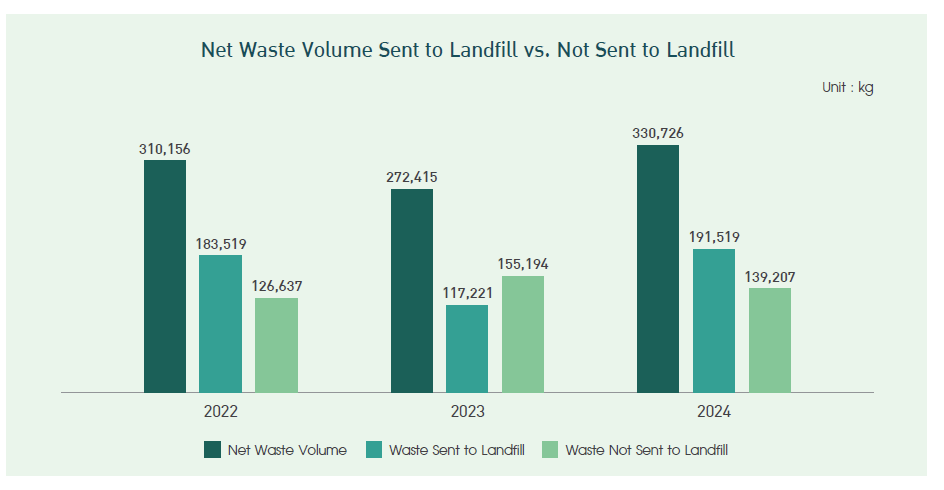
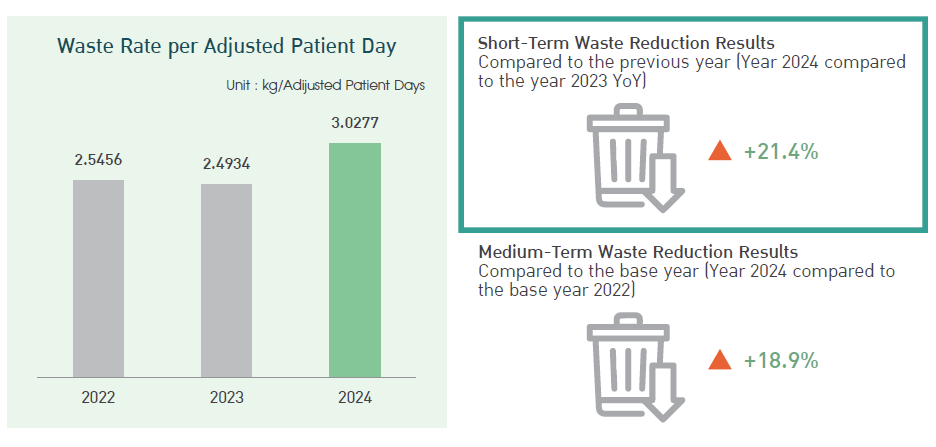
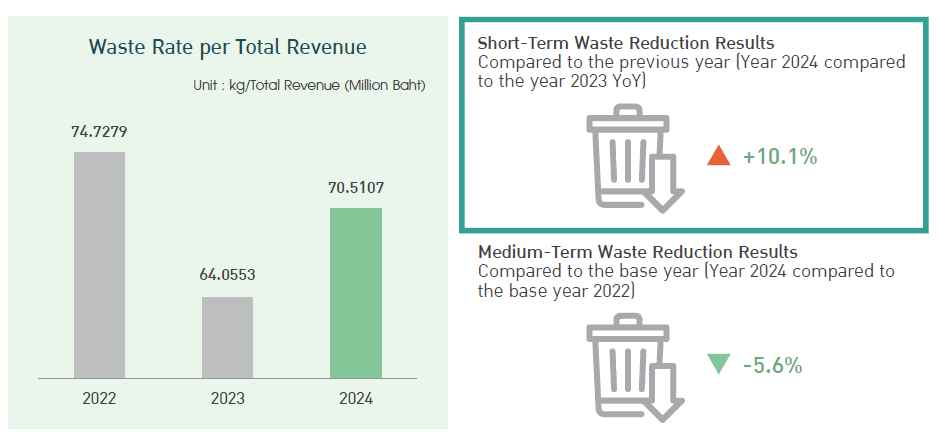
In the performance results for the year 2024 compared to the base year 2022, net waste volume increased by 6.6%. The waste volume per adjusted patient day increased by 18.9%, while the waste volume per total revenue decreased by 5.6%.
The Company places great importance on efficient waste management by integrating the Circular Economy approach with the 1A3R strategy. This includes reducing waste volume through Reduce, minimizing waste at the source, reusing materials through Reuse, and maximizing waste reutilization through Recycle. With this approach, the Company has established a structured waste management plan to mitigate negative environmental impacts, reduce waste generation, and lower greenhouse gas emissions. This initiative aligns with the Company's commitment to sustainable business practices while upholding social and environmental responsibility.
Waste Disposal Process by Type
- General Waste: Managed by the Waste and Sanitation Management Office and sent to a landfill in Prawet District
- Recyclable Waste: Sent to Chaichan Plastic and Recycle Company Limited
- Infectious Waste: Disposal is carried out by Bangkok Thanakom Company using a 4-wheel temperature-controlled vehicle. The waste is disposed of in compliance with standards and infectious waste destruction procedures.
- Hazardous Waste: Disposed of by Akkhie Prakarn Company using a 4-wheel enclosed truck. The waste undergoes hazardous waste destruction processes in accordance with standards.
Waste Development and Management Approaches
- Increase the value of waste through recycling (Recycle)
- Enhance waste management towards zero waste (Zero Waste to Landfill)
- Promote waste management under the 1A3R concept, which includes Avoid, Reduce, Reuse, and Recycle

